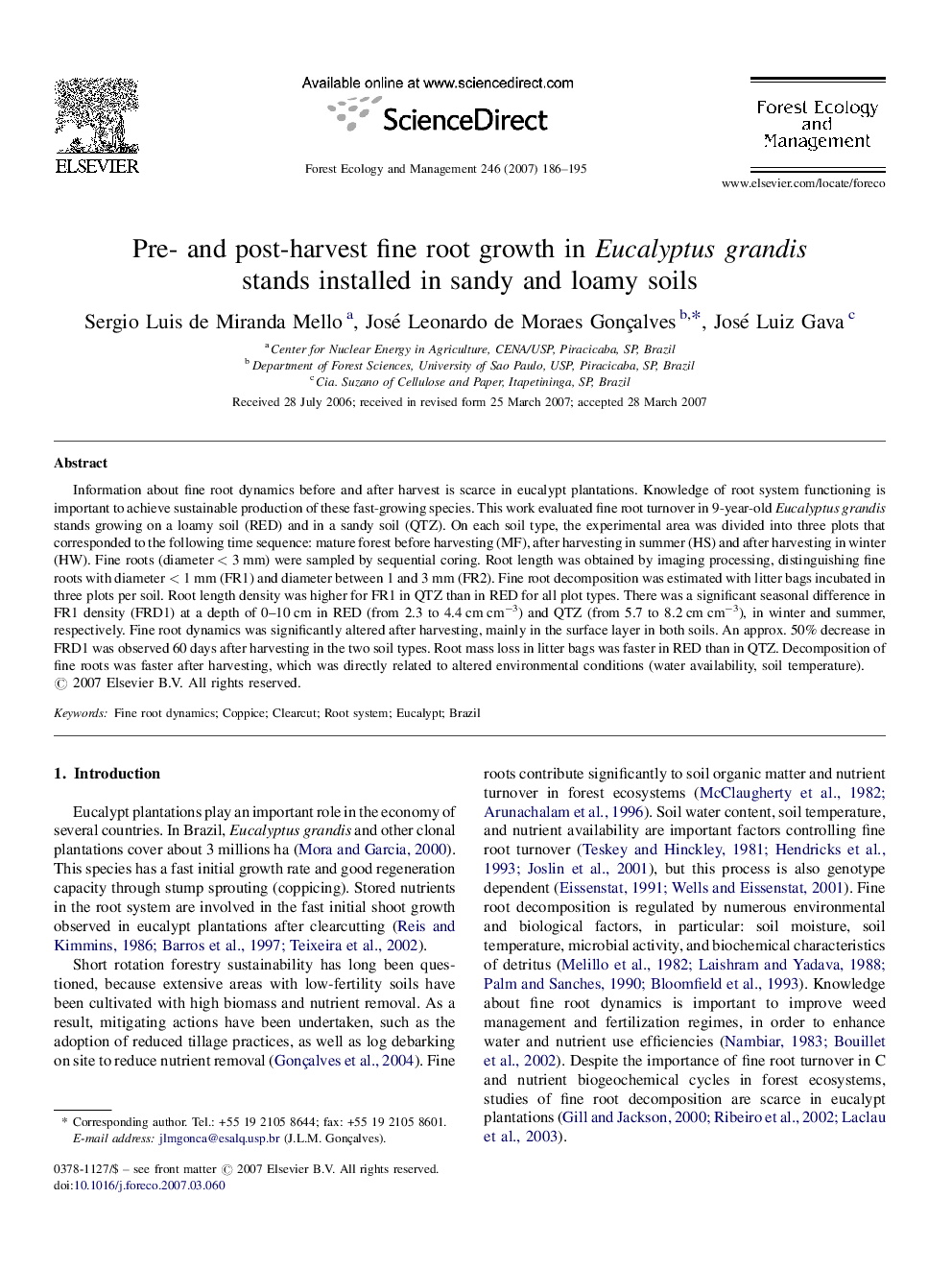| Article ID | Journal | Published Year | Pages | File Type |
|---|---|---|---|---|
| 90460 | Forest Ecology and Management | 2007 | 10 Pages |
Information about fine root dynamics before and after harvest is scarce in eucalypt plantations. Knowledge of root system functioning is important to achieve sustainable production of these fast-growing species. This work evaluated fine root turnover in 9-year-old Eucalyptus grandis stands growing on a loamy soil (RED) and in a sandy soil (QTZ). On each soil type, the experimental area was divided into three plots that corresponded to the following time sequence: mature forest before harvesting (MF), after harvesting in summer (HS) and after harvesting in winter (HW). Fine roots (diameter < 3 mm) were sampled by sequential coring. Root length was obtained by imaging processing, distinguishing fine roots with diameter < 1 mm (FR1) and diameter between 1 and 3 mm (FR2). Fine root decomposition was estimated with litter bags incubated in three plots per soil. Root length density was higher for FR1 in QTZ than in RED for all plot types. There was a significant seasonal difference in FR1 density (FRD1) at a depth of 0–10 cm in RED (from 2.3 to 4.4 cm cm−3) and QTZ (from 5.7 to 8.2 cm cm−3), in winter and summer, respectively. Fine root dynamics was significantly altered after harvesting, mainly in the surface layer in both soils. An approx. 50% decrease in FRD1 was observed 60 days after harvesting in the two soil types. Root mass loss in litter bags was faster in RED than in QTZ. Decomposition of fine roots was faster after harvesting, which was directly related to altered environmental conditions (water availability, soil temperature).
